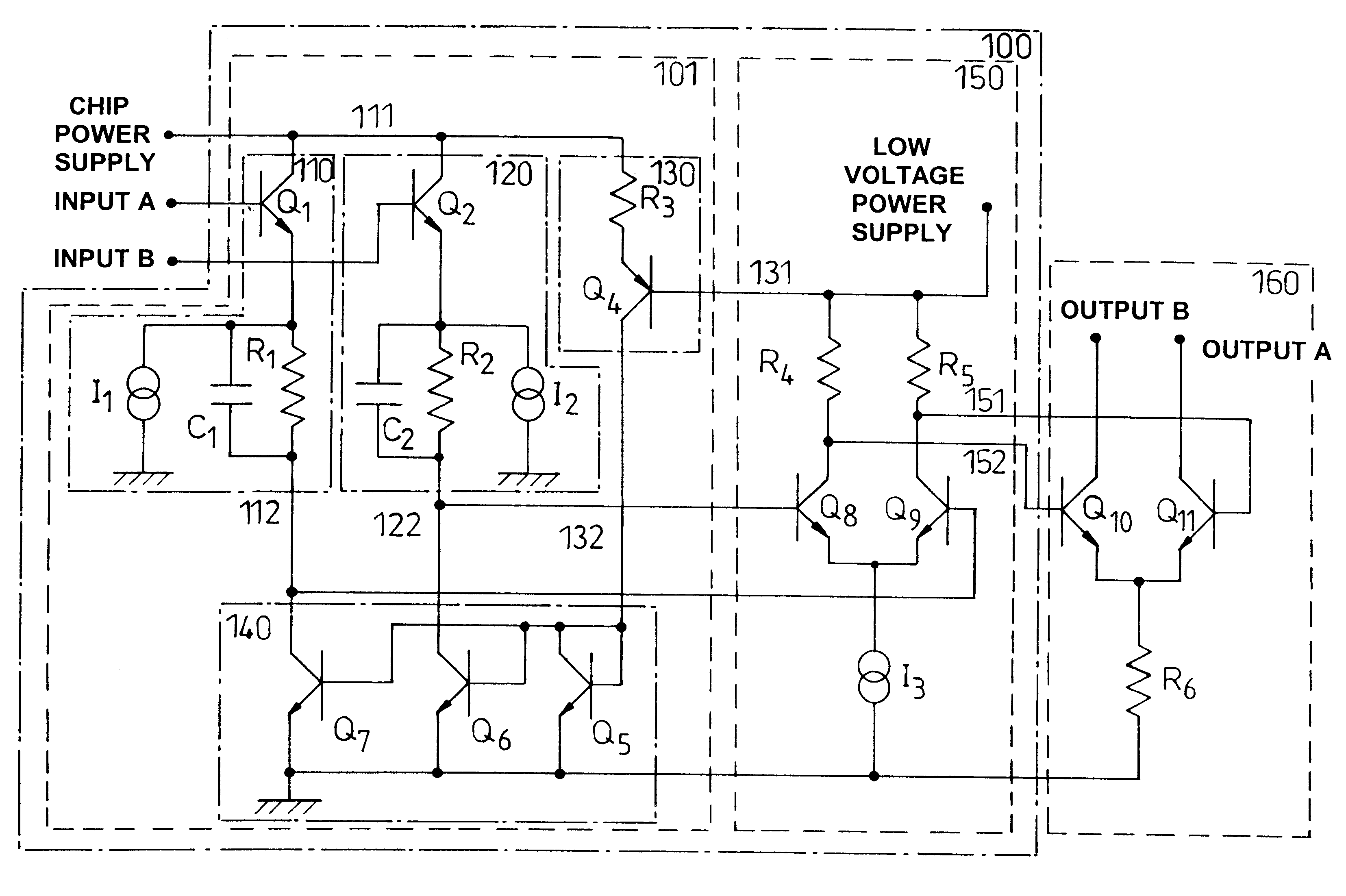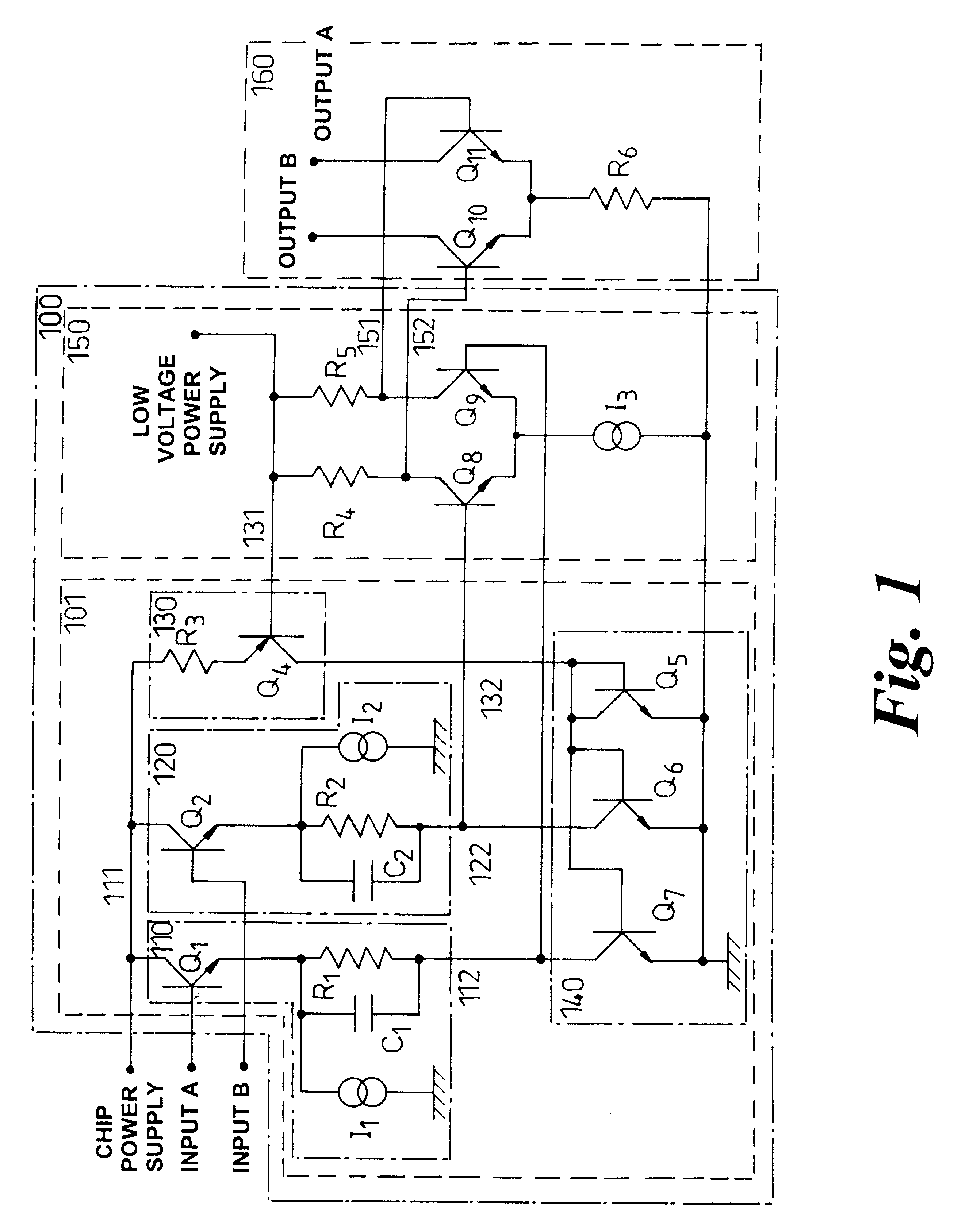High speed level shift circuit for low voltage output
a high-speed level and output technology, applied in logic circuit coupling/interface arrangement, pulse technique, semiconductor lasers, etc., can solve the problems of not taking into account power supply variation, required circuit complexity, and significantly increased semiconductor process complexity, etc., to maximise drive capability, minimise voltage headroom, and best efficiency
- Summary
- Abstract
- Description
- Claims
- Application Information
AI Technical Summary
Benefits of technology
Problems solved by technology
Method used
Image
Examples
Embodiment Construction
Referring first to FIG. 1, there is shown a first embodiment of a high-speed level shift circuit for low voltage output.
The high speed level shift circuit 100 comprises a re-referencing stage 101 and a regenerating buffer stage 150. In the arrangement shown, the level shift circuit is coupled to an output stage 160.
The re-referencing stage 101 comprises first and second input stages 110, 120, sensing element 130, and current mirror 140.
Input stage 110 comprises a connection to the chip power rail 111 (typically 3.3V.+-.0.3) and a data signal input INPUTA and a signal output 112. It comprises a NPN transistor Q1, resistor R1 capacitor C1, and current source I1. The base connection of Q1 is connected to the data input INPUTA; the collector of Q1 is connected to the chip power rail 111. Resistor R1 is connected in series between the emitter of Q1 and the output port 112. Capacitor C1 is connected in parallel across resistor R1. Current source I1 is connected to the emitter of Q1.
Input ...
PUM
 Login to View More
Login to View More Abstract
Description
Claims
Application Information
 Login to View More
Login to View More - R&D
- Intellectual Property
- Life Sciences
- Materials
- Tech Scout
- Unparalleled Data Quality
- Higher Quality Content
- 60% Fewer Hallucinations
Browse by: Latest US Patents, China's latest patents, Technical Efficacy Thesaurus, Application Domain, Technology Topic, Popular Technical Reports.
© 2025 PatSnap. All rights reserved.Legal|Privacy policy|Modern Slavery Act Transparency Statement|Sitemap|About US| Contact US: help@patsnap.com



